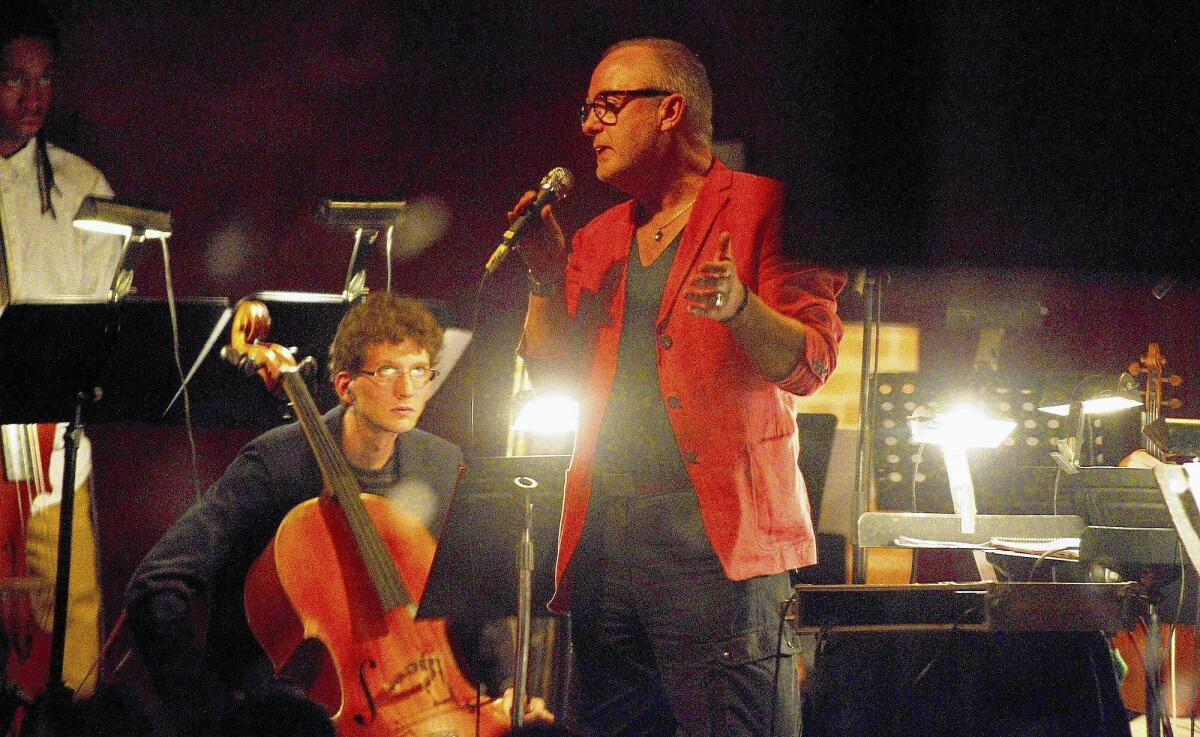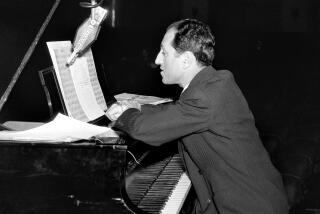In Post-Minimalism’s music, everyone gets along

Before there was Minimalism there was Post-Minimalism. That might seem hardly feasible if you put your trust in time being an irreversible process. Theoretical physics, however, allows for a more open future in which the concepts of past and present become malleable.
With the advent of Minimalism in music 50 years ago, young composers cleaned the slate with basic chords, simple melodic formulas, a beat and, most of all, a salute to repetition. All that was off-limits in the Modernist musical revolution set off a half-century earlier.
But what Minimalism has turned out providing has been a way to reverse history. The clean slate remained spotless only for a short while. Eventually it became a magnet for everything under the musical sun. In Post-Minimalism, any music of any style from any time or place (even Modernist complexity) is encouraged to achieve détente with any other. Rather than the end of history, we now enjoy all history at once.
SPRING ARTS 2014: Classical music picks
So it wasn’t as strange as it might seem that even before we could put another dime in the big Minimalist Jukebox — the Los Angeles Philharmonic’s grand festival that will be taking over much of the musical life in Los Angeles and Santa Monica over the next couple of weeks — we had an ad hoc Post-Minimalist prelude last weekend.
Most of this was thanks to the first Tune-In Festival L.A., put on by the Center for the Art of Performance at UCLA and promised to become a biannual event. The three-day new music cornucopia featured veteran East Coast groups Imani Winds, Ethel, eighth blackbird and yMusic.
Coincidentally, at Cafe Club Fais Do-Do in the West Adams neighborhood Friday, the young L.A.-based ensemble What’s Next? presented an evening featuring JacobTV, whose real name is Jacob Ter Veldhuis. He’s a Dutch composer who describes himself as “an outlaw of the established modern classical music scene.”
But if any conclusion could be drawn from these performances, it is that when everything is related, respect is more common than revolution. Minimalism was a world of factions. In Post-Minimalism, everyone gets along.
JacobTV is a poster-boy Post-Minimalist. His background is as a rock musician. But he has classical compositional training and a sizable technique. He is more than a little influenced by Steve Reich’s use of speech as a template for melody and rhythm. His jazz-driven hard edge is more than a little influenced by the Dutch Minimalist school founded by Louis Andriessen.
PHOTOS: Arts and culture in pictures by The Times
The works chosen by What’s Next? were based on found recordings. In “Cheese Cake,” that was a recording of tenor saxophonist Dexter Gordon distractedly introducing a Carnegie Hall 1978 concert. “Jesus Is Coming” is music made around the wailing of a street preacher in Times Square.
“The News,” a video opera, was the major work. Without his two singers on hand, JacobTV made a special suite for What’s Next? in which he assigned the vocal parts to instruments. The small chamber orchestra, conducted by music director Vimbayi Kaziboni, accompanied the video imagery recorded from television news around the world. A good deal was silly (police in the U.S. trying to catch a puppy on the freeway); some, downright horrifying (African poverty). Throughout, JacobTV electronically altered TV anchoring into a kind of bop-fest.
The results were entertaining, and the performance funky in a mostly charming way. Twice, though, the players had to stop and start again. There were equipment issues and jitters. The La Habra earthquake helped to shake things up. This was surely the first performance of “The News” given while the news was being made.
Earlier Friday evening, Ethel, a post-Kronos string quartet, was joined by the eloquent jazz guitarist Kaki King in Schoenberg Hall at UCLA for an hourlong post-historical set. In one piece, Ethel violinist Kip Jones took a cue from the Minimalist technique of adding or subtracting beats in his arrangement of the first movement of Bach’s Sixth “Brandenburg” Concerto. By slicing off a beat from every measure in what became “Brndnbrg Cncrto nr6 mvt1,” Jones turned the tables of musical history.
PHOTOS: Best classical concerts of 2013 | Mark Swed
The next night in Royce Hall, the lowercase sextet eighth blackbird presented arrangements of four virtuosic Ligeti piano études. The Hungarian composer happened to be the one member of the World War II European avant-garde elite who became attracted to Minimalism. These brilliantly colored arrangements by flutist Tim Munro and pianist Lisa Kaplan transformed technical keyboard studies into pieces that sounded flamboyantly ahistorical, as if Minimalist patterns had the power to infect everything.
This was a Post-Minimalism program with the roots of Minimalism clearly showing. The tremolos and repeated patterns in Tristan Perich’s “Qsqsqsqsqqqqqqqqq” for three amplified toy pianos produced an altogether new sound, like the tintinnabulations of celestial flutes. Minimalism has been classing up rock for the past two decades, paving the way for such pop musicians as Bryce Dessner (The National) and Sufjan Stevens to have written respectable Post-Minimalist works that eighth blackbird and the Brooklyn collective yMusic could play Saturday.
The Tune-In Festival tuned out with the performance of a Minimalist classic, Andriessen’s 1975 “Workers Union,” that used the combined forces of eighth blackbird, yMusic and a number of UCLA students. It was written before most of the players on the Royce stage were born. It rocked the house. There was no revolution, just reverence for a Dutch composer whose influence has been wide and whose opera, “De Materie,” will help climax Minimalist Jukebox on April 18.
More to Read
The biggest entertainment stories
Get our big stories about Hollywood, film, television, music, arts, culture and more right in your inbox as soon as they publish.
You may occasionally receive promotional content from the Los Angeles Times.







